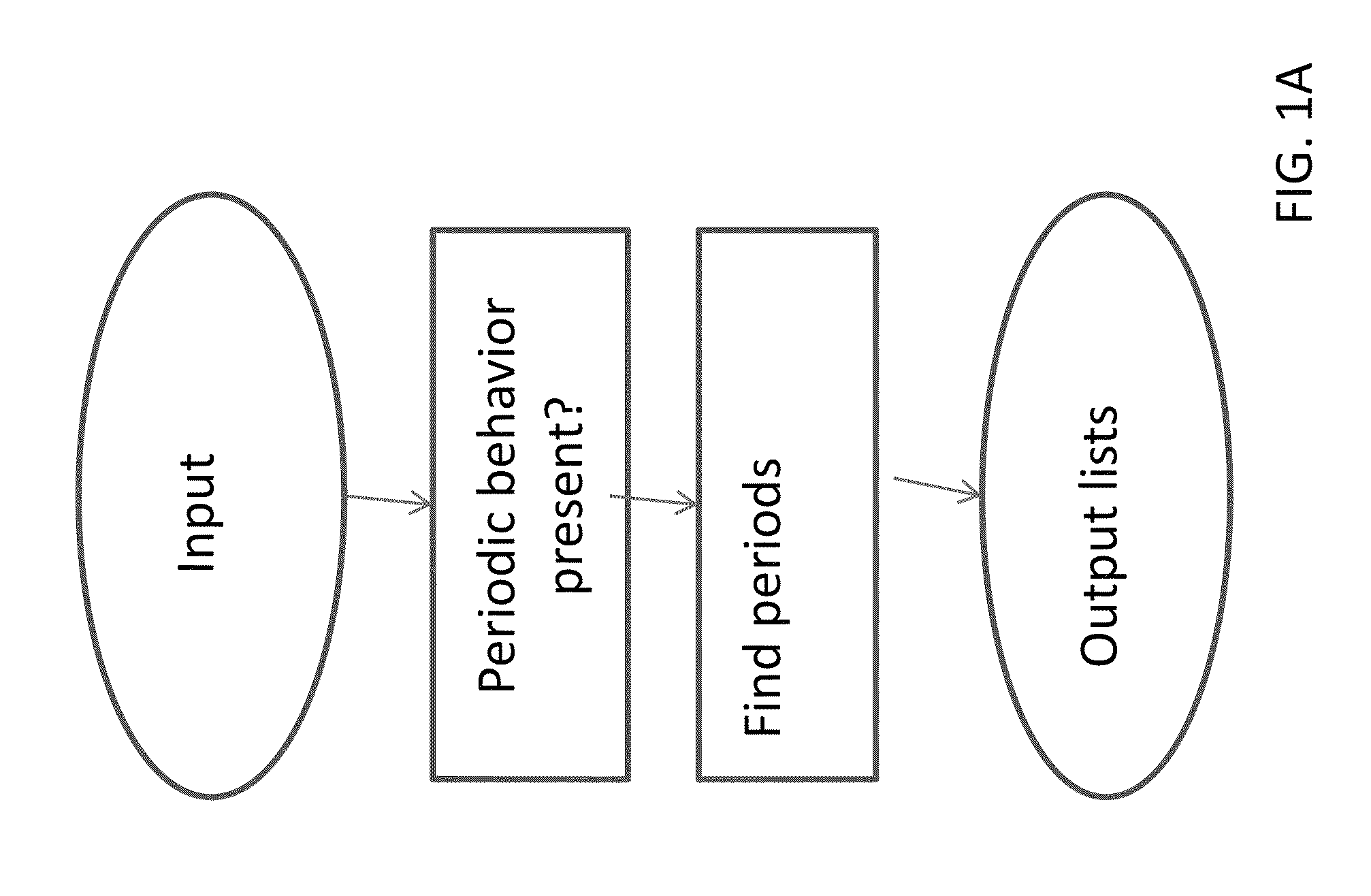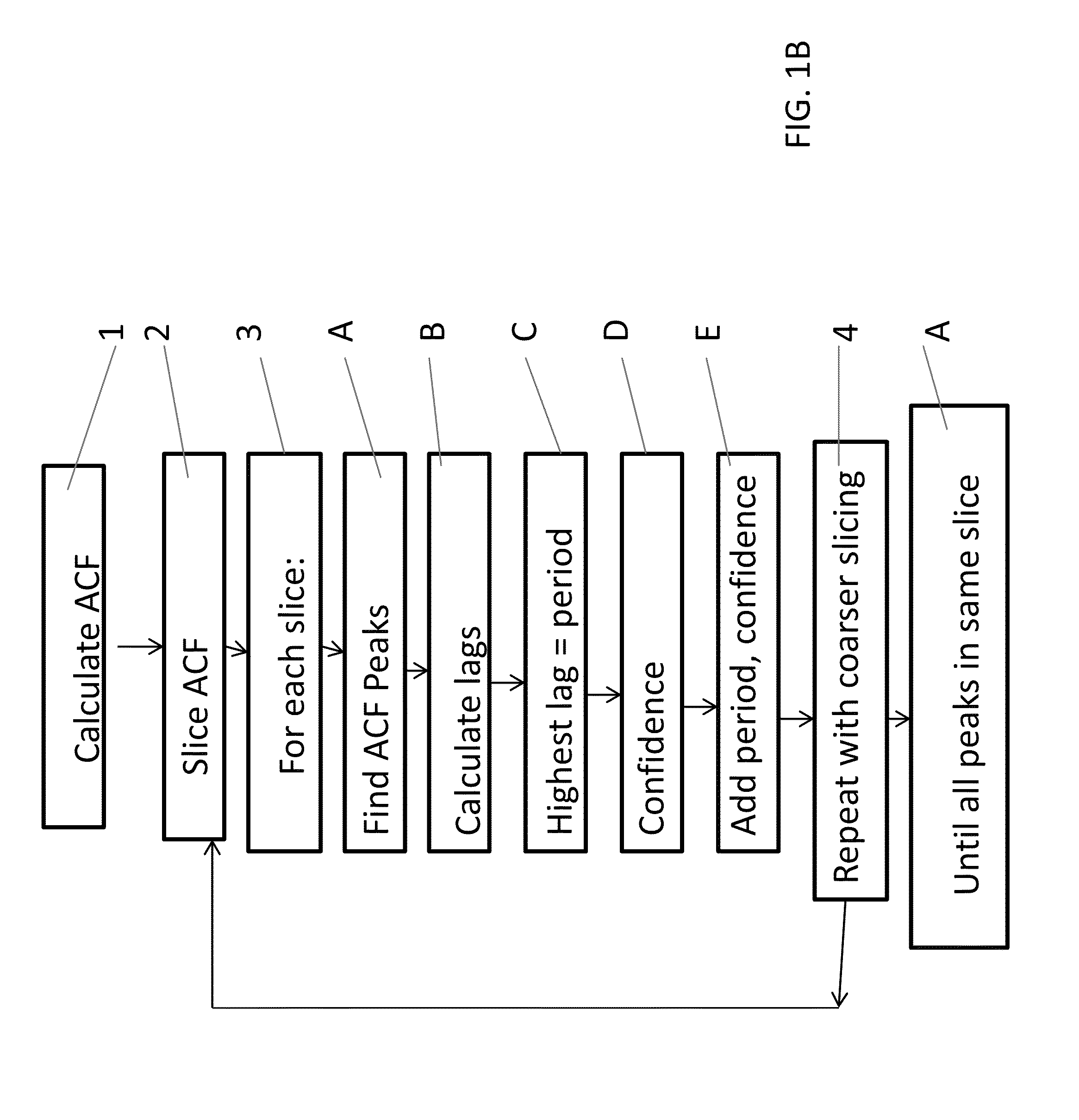Inferring the periodicity of discrete signals
a discrete signal and periodicity technology, applied in the field of inferring the periodicity of discrete signals, can solve the problems of expensive spill-over links with a usage-based cost, affecting user satisfaction, and congestion on routers or servers
- Summary
- Abstract
- Description
- Claims
- Application Information
AI Technical Summary
Benefits of technology
Problems solved by technology
Method used
Image
Examples
Embodiment Construction
[0054]The present invention, in some embodiments thereof, relates to identification of periodicity in a signal and the subsequent identification of multiple layers of periodicity if present.
[0055]As discussed, the prior art assumes that periodicity is present and attempts to determine its period. The present embodiments first determine whether periodicity is present and only then do they attempt to extract one or more periods from the data.
[0056]The method was tested both on real data and simulated data and was shown to be both resilient to noise and to be able to find multiple periods. In particular, the methods of the present embodiments may be resilient to the following noises on a bipolar square signal: phase noise, sampling noise, and a non-symmetric duty cycle.
[0057]In order to infer these periodicities the data may be treated as a signal and may serve as input to the presently discussed Multiple Period Estimation (MPE) algorithm. The output of the algorithm is a list of perio...
PUM
 Login to View More
Login to View More Abstract
Description
Claims
Application Information
 Login to View More
Login to View More - R&D
- Intellectual Property
- Life Sciences
- Materials
- Tech Scout
- Unparalleled Data Quality
- Higher Quality Content
- 60% Fewer Hallucinations
Browse by: Latest US Patents, China's latest patents, Technical Efficacy Thesaurus, Application Domain, Technology Topic, Popular Technical Reports.
© 2025 PatSnap. All rights reserved.Legal|Privacy policy|Modern Slavery Act Transparency Statement|Sitemap|About US| Contact US: help@patsnap.com



